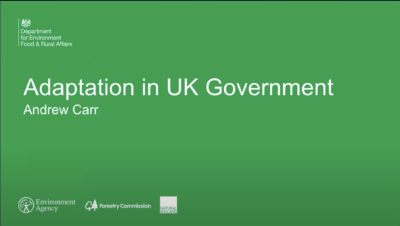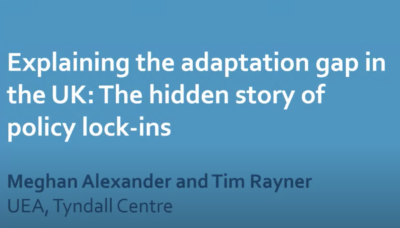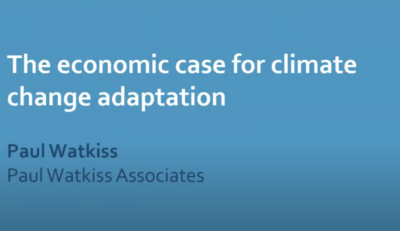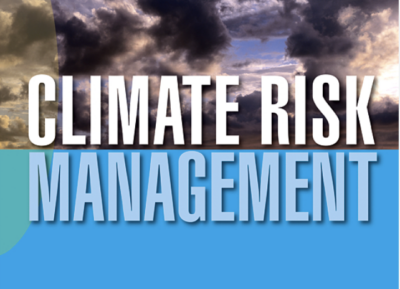Welcome and Introduction
As the impacts of climate change become increasingly apparent, it is vital that we equip ourselves with the knowledge and tools to adapt and build resilience. In this short module, we look at three informative webinars that look at how the UK government is approaching adaptation, the economic case for adaptation, and explore something called the ‘adaptation gap’. We hope these give you a better understanding not just of what adaptation is but what it means in a UK context, why and how it makes economic sense, and what else needs to be done.
We used this first webinar to help us understand what approaches the UK Government is taking to increase the country’s resilience to climate change impacts. The webinar also considers what the UK Government is doing regarding its approach to adaptation that aims to increase resilience. With this in mind, if you have watched this video it might be worth revisiting it again but looking at it through the lens of adaptation rather than resilience.
In this second video Meghan and Tim from the Tyndall Centre at the University of East Anglia look into more detail about adaptation in the UK. In particular, they discuss how policy lock-ins can occur that could affect adaptation planning.
When considering adaptation, it is imperative that we view it in a number of ways for example social justice, safe guarding ecosystems, but also through the economics of adaptation. In this recorded webinar Paul Watkins and Alistair Hunt introduce us to some of the factors that are critical when discussing the economic case for climate change adaptation.
UK Adaptation Inventory
As part of the Open CLimate IMpacts modelling framework (OpenCLIM) project led by Professor Robert Nicholls of the Tyndall Centre at the University of East Anglia, Dr Katie Jenkins developed the The UK Adaptation Inventory. This is the first version of the inventory that aims to address the extent to which plans and programmes translate into tangible risk reducing action on the ground, as opposed to adaptive capacity building, remains less clear by documenting adaptation on the ground, based on national reporting to government by public and private sector organisations and a systematic review of peer – reviewed literature.
If you would like to read more about the thinking behind the adaptation inventory, and how it was developed you can read an academic paper that Katie wrote with her colleagues. Click on the image below to access the paper called Identifying adaptation ‘on the ground’: Development of a UK adaptation Inventory.





